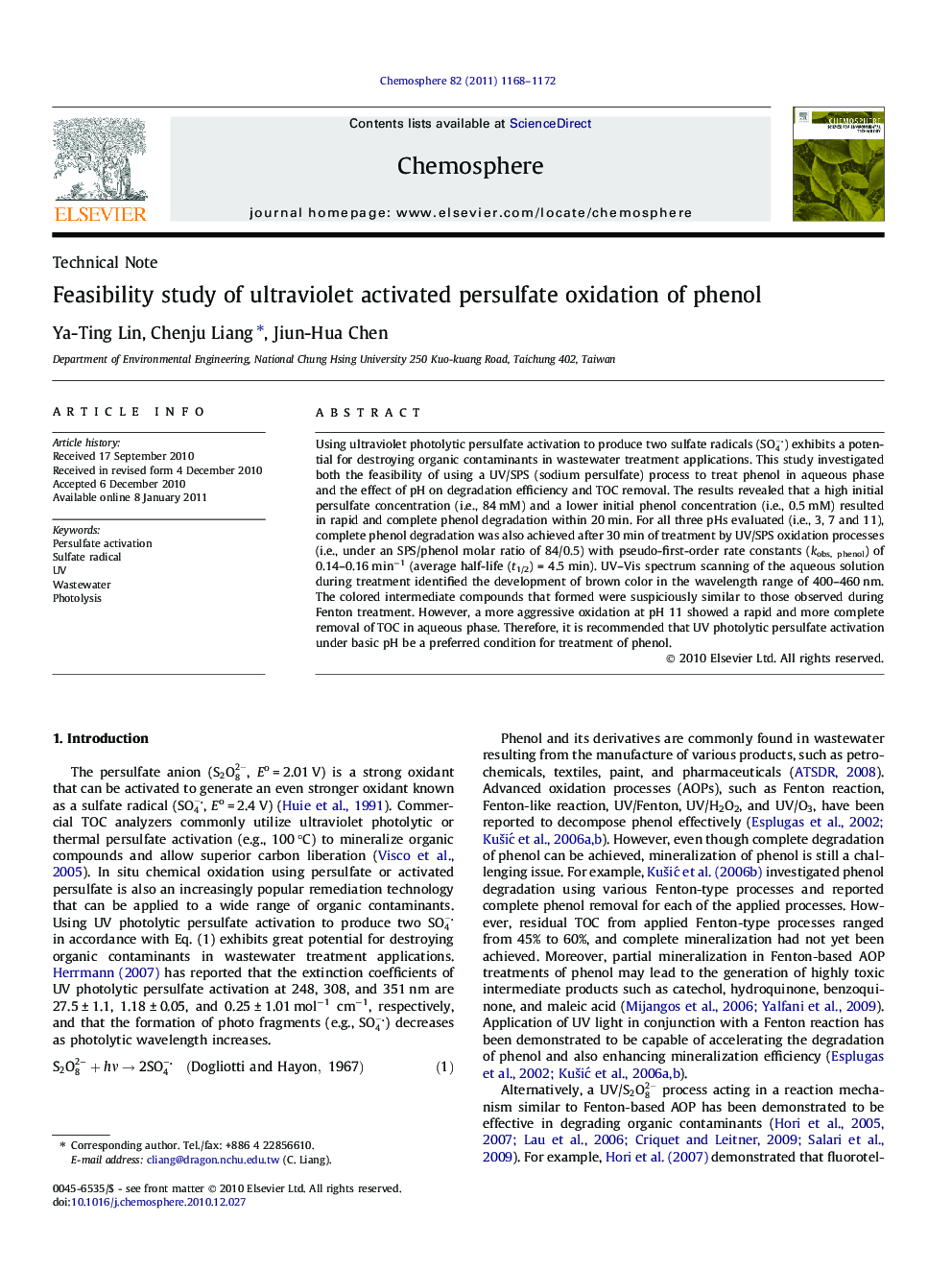| کد مقاله | کد نشریه | سال انتشار | مقاله انگلیسی | نسخه تمام متن |
|---|---|---|---|---|
| 4411406 | 1307592 | 2011 | 5 صفحه PDF | دانلود رایگان |

Using ultraviolet photolytic persulfate activation to produce two sulfate radicals (SO4-) exhibits a potential for destroying organic contaminants in wastewater treatment applications. This study investigated both the feasibility of using a UV/SPS (sodium persulfate) process to treat phenol in aqueous phase and the effect of pH on degradation efficiency and TOC removal. The results revealed that a high initial persulfate concentration (i.e., 84 mM) and a lower initial phenol concentration (i.e., 0.5 mM) resulted in rapid and complete phenol degradation within 20 min. For all three pHs evaluated (i.e., 3, 7 and 11), complete phenol degradation was also achieved after 30 min of treatment by UV/SPS oxidation processes (i.e., under an SPS/phenol molar ratio of 84/0.5) with pseudo-first-order rate constants (kobs, phenol) of 0.14–0.16 min−1 (average half-life (t1/2) = 4.5 min). UV–Vis spectrum scanning of the aqueous solution during treatment identified the development of brown color in the wavelength range of 400–460 nm. The colored intermediate compounds that formed were suspiciously similar to those observed during Fenton treatment. However, a more aggressive oxidation at pH 11 showed a rapid and more complete removal of TOC in aqueous phase. Therefore, it is recommended that UV photolytic persulfate activation under basic pH be a preferred condition for treatment of phenol.
Research highlights
► Complete phenol degradations can be achieved by UV/SPS oxidation processes in the pH range of 3–11.
► During the phenol degradation the color change observed at 455 nm or in the range of 400–600 nm is a feasible indication either of a reduction of intermediate compounds or of TOC removal.
► A higher degree of phenol mineralization at pH 11 can be expected due to the fact that sulfate radicals undergo reactions with hydroxide ions to hydroxyl radicals.
Journal: Chemosphere - Volume 82, Issue 8, February 2011, Pages 1168–1172